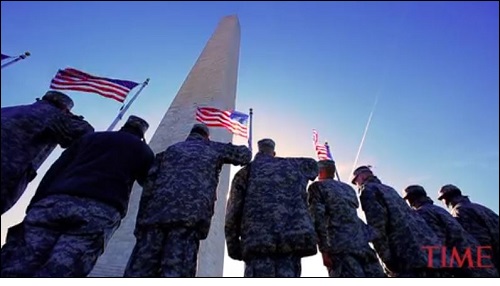
|
|

|
|
| April 24, 2024 |
|
Transgender troops will face obstacles after Supreme Court order 
WASHINGTON--Hundreds of transgender troops may continue serving in the military, but will face obstacles unless they serve “in their biological sex” now that the Supreme Court has allowed President Donald Trump’s policy to go into effect while a legal fight unfolds.
In a 5-4 decision Tuesday, the court’s five conservative justices cleared a path for the Defense Department to enforce the Trump Administration’s policy banning most transgender Americans from serving in the military. The unsigned order is not a final decision on the policy, but it suggests the justices are likely to uphold the policy when one of the ongoing cases reaches the Supreme Court through appeal, a process that could take years. In the meantime, the ruling is a win for the Administration, which had argued that military readiness and effectiveness were in question. Lt. Col. Carla M. Gleason, a Defense Department spokeswoman, said Pentagon leadership was “pleased” that the Supreme Court had cleared the way for Trump’s policy to go into effect. She added that the Pentagon will continue to work with the Department of Justice regarding next steps in the pending lawsuits. “As always, we treat all transgender persons with respect and dignity,” she said in a statement. “DoD’s proposed policy is NOT a ban on service by transgender persons. It is critical that DoD be permitted to implement personnel policies that it determines are necessary to ensure the most lethal and combat effective fighting force in the world.” Federal judges in the lower courts in California; Maryland; Washington, D.C.; and Washington state had previously issued orders blocking the ban, saying the policy appeared to be unconstitutional discrimination. The Pentagon did not stand in the way of those rulings. The Administration sought to fast-track the arguments by asking the Supreme Court to directly decide whether trial judges were correct to stop the policy from taking effect. The request to bypass the federal appeals court was needed, according to U.S. Solicitor General Noel Francisco, out of an “imperative public importance.” However, the justices denied those petitions and instead decided to let the litigation play out in lower courts. GLAD’s Jennifer Levi, a lead co-counsel in case in U.S. District Court for the District of Columbia, said the Supreme Court “saw through the Administration’s contrived efforts to gin up a national crisis,” but she noted that today’s decision will have lasting repercussions. “Unfortunately, the court’s stay of the lower courts’ preliminary orders means that courageous transgender service members will face discharges while challenges to the ban go forward,” she said in a statement. “The Trump Administration’s cruel obsession with ridding our military of dedicated and capable service members because they happen to be transgender defies reason and cannot survive legal review.” Before he left office in 2016, President Barack Obama aimed to make the armed forces more inclusive by allowing transgender men and women to serve openly in the military for the first time, and to seek sex reassignment surgery, hormone therapy and other treatments at military hospitals. The Department of Defense said 937 transgender individuals came out, being open about identities they had long hidden for fear of being discharged, and the military started preparing to enlist openly transgender people. A year later, Trump moved to undo the changes Obama instigated. In three Twitter posts in July 2017, Trump said the Pentagon “will not accept or allow” transgender people to serve “in any capacity” in the military. The announcement caught Pentagon leadership flat-footed because many of the military’s top generals and admirals had embraced the transgender policy. All five military chiefs of staff have publicly testified that the transgender policy did not cause readiness issues. The RAND Corporation issued a report finding that the number of openly transgender people serving in the military would likely “be a small fraction of the total force and have minimal impact on readiness and health care costs.” There is no definite figure for how many transgender people are currently on active duty, but estimates vary widely from about 2,500 to 15,500 in an active-duty force of about 1.3 million. (Source: TIME) Story Date: January 23, 2019
|